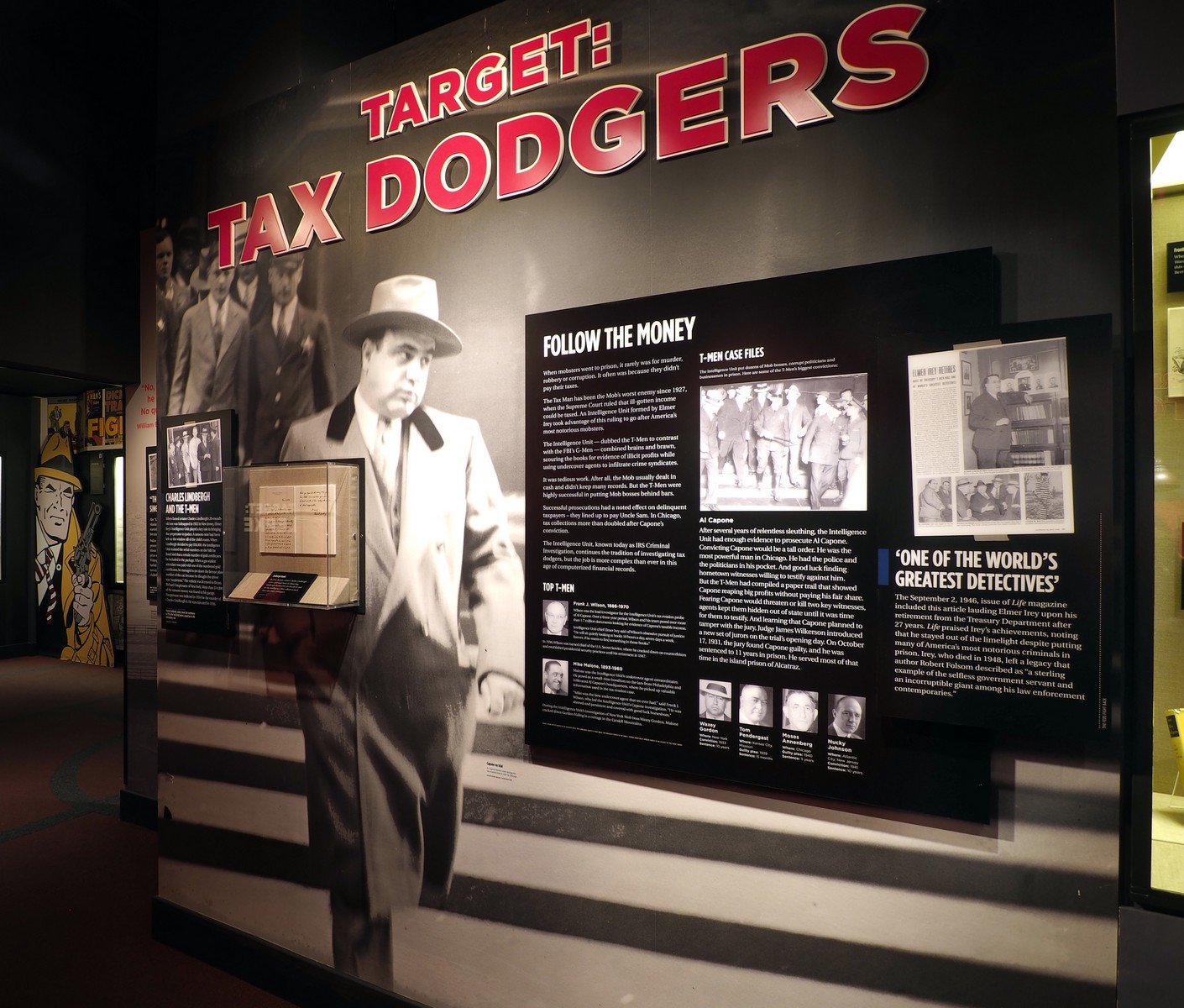
Overview
Mob bosses rarely paid a price for their thieving and murderous acts. Witnesses often were afraid to testify, and jurors were paid off to ensure “not guilty” verdicts. But if mobsters didn’t pay their income taxes, they could run into big trouble. Just ask Al Capone, the Chicago bootlegging boss who found himself serving time in Alcatraz for dodging the tax man. The Treasury Department’s Intelligence Unit – the T-Men – built the cases that put away Capone and many other mobsters and corrupt public officials in the 1930s and ’40s.
Gallery

Elmer Irey led the Intelligence Unit in the Treasury Department that used income tax laws to send a generation of high-profile organized crime leaders to prison.

This Smith & Wesson .38 Special handgun belonged to Michael Malone, the man who went undercover to infiltrate Al Capone’s gang in the 1930s.
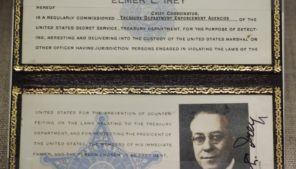
This badge gave Elmer Irey permission to visit the White House. His role was important and he often needed to inform and advise officials.
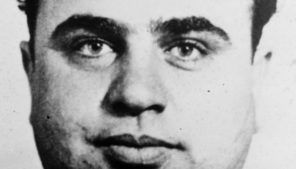
Al Capone, for all his criminal activities, was eventually brought down for tax evasion in 1931.

This large ashtray sat in the offices of the IRS Criminal Division in New York City.
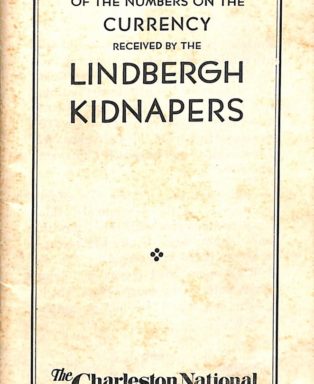
These booklets were issued by Elmer Irey and the IRS and recorded the serial numbers of all the bills paid in ransom in the Lindbergh kidnapping. The numbers were recognized by a bank teller and led to a successful arrest and conviction.
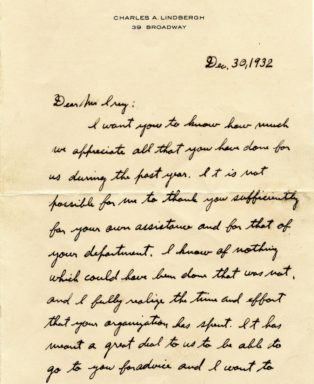
This is a handwritten letter from Charles Lindbergh to Elmer Irey thanking him for his help and guidance in finding the kidnapper and murderer of his son.

Mike Malone was an IRS undercover agent. These handcuffs were a part of his tools of the trade.

Mike Malone’s work as an undercover agent helped bring Capone to justice.
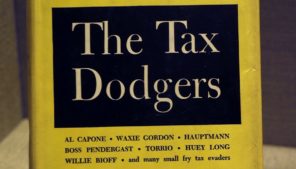
The Tax Dodgers is Elmer Irey’s memoir on his time as the head of the Intelligence Unit in the Treasury Department.





